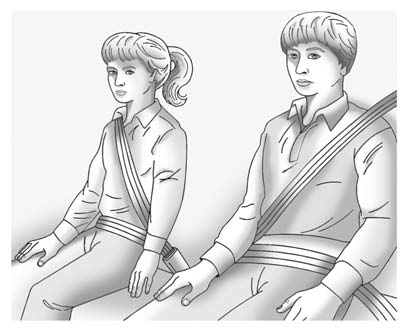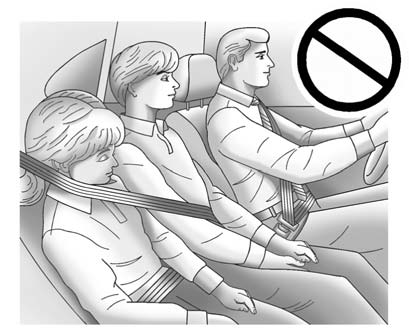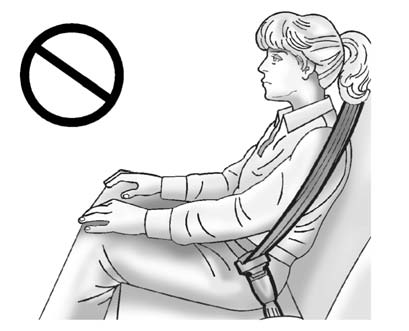Older Children

Older children who have outgrown booster seats should wear the vehicle safety belts.
The manufacturer's instructions that come with the booster seat state the weight and height limitations for that booster. Use a booster seat with a lap-shoulder belt until the child passes the fit test below:
- Sit all the way back on the seat.
Do the knees bend at the seat edge? If yes, continue. If no, return to the booster seat.
- Buckle the lap-shoulder belt.
Does the shoulder belt rest on the shoulder? If yes, continue.
If no, try using the rear safety belt comfort guide. See “Rear Safety Belt Comfort Guides” under Lap-Shoulder Belt for more information.
If the shoulder belt still does not rest on the shoulder, then return to the booster seat.
- Does the lap belt fit low and snug on the hips, touching the thighs? If yes, continue. If no, return to the booster seat.
- Can proper safety belt fit be maintained for the length of the trip? If yes, continue. If no, return to the booster seat.
Q: What is the proper way to wear safety belts? A: An older child should wear a lap-shoulder belt and get the additional restraint a shoulder belt can provide. The shoulder belt should not cross the face or neck. The lap belt should fit snugly below the hips, just touching the top of the thighs.
This applies belt force to the child's pelvic bones in a crash.
It should never be worn over the abdomen, which could cause severe or even fatal internal injuries in a crash.
Also see “Rear Safety Belt Comfort Guides” under Lap-Shoulder Belt.
According to accident statistics, children and infants are safer when properly restrained in a child restraint system or infant restraint system secured in a rear seating position.
In a crash, children who are not buckled up can strike other people who are buckled up, or can be thrown out of the vehicle. Older children need to use safety belts properly.
WARNING
Never allow more than one child to wear the same safety belt.
The safety belt cannot properly spread the impact forces. In a crash, they can
be crushed together and seriously injured.
A safety belt must be used by only one person at a time.

WARNING
Never allow a child to wear the safety belt with the shoulder belt behind their
back. A child can be seriously injured by not wearing the lap-shoulder belt
properly.
In a crash, the child would not be restrained by the shoulder belt.
The child could move too far forward increasing the chance of head and neck
injury.
The child might also slide under the lap belt. The belt force would then be
applied right on the abdomen. That could cause serious or fatal injuries.
The shoulder belt should go over the shoulder and across the chest.

See also:
General Towing
Information
Only use towing equipment that
has been designed for the vehicle.
Contact your dealer or trailering
dealer for assistance with preparing
the vehicle for towing a trailer.
See the following tra ...
Passenger Sensing System
The passenger sensing system, if equipped, turns off the front outboard passenger
frontal airbag under certain conditions. No other airbag is affected by the passenger
sensing system.
If the vehi ...
All-Wheel Drive
If the vehicle has this feature, engine power is sent to all four wheels when
extra traction is needed. This is like four-wheel drive, but there is no separate
lever or switch to engage or disenga ...






